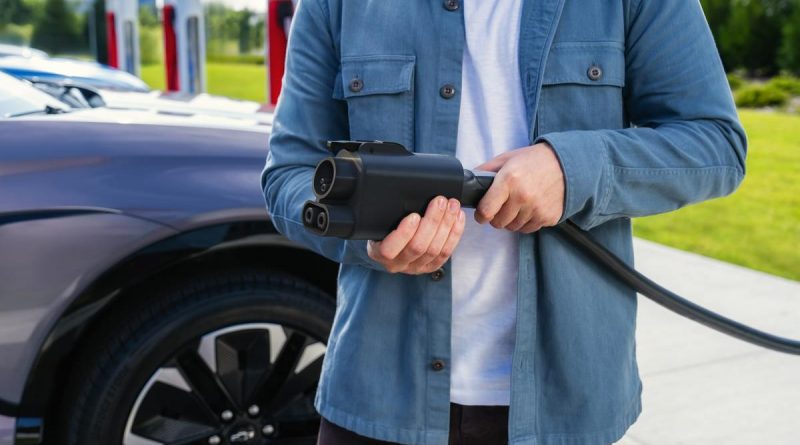Attention EV Owners: Get Ready for the Dongles!
Nearly a year ago, GM launched an adapter that allows existing electric vehicles to use North American Charging Standard plugs at Tesla Supercharger stations, providing considerable relief for EV owners.
Recently, GM has introduced three new adapters to help customers access EV chargers with various charging rates and standards. While this increases convenience, it may also complicate matters; a household with two electric vehicles might need four different adapters now.
A few years ago, most EV models in the U.S. adhered to the Combined Charging System (CCS) standard, with Tesla standing out as a notable exception. In 2022, Tesla unveiled its charging connector and port design, named the North American Charging Standard (NACS), to foster its adoption among other manufacturers and network operators, aiming to set it as the new standard in North America.
This aspiration has come to fruition. Today, almost all automotive manufacturers are providing adapters for access to Tesla Supercharger stations and are even planning to integrate the NACS design into their forthcoming models.
“GM is fully committed to transitioning our entire EV lineup to NACS,” remarked Tim Ash, director of hardware products for GM Energy, during a conversation with TechCrunch. “We believe that adopting this unified standard enhances the experience for our customers.”
Nonetheless, this change has led to a somewhat chaotic landscape — along with a multitude of adapters.
In addition to the existing NACS-to-CCS adapter for fast charging, GM is set to introduce a NACS-to-J1772 adapter for Level 2 charging (J1772 pertains to the CCS plug designed for slower charging rates). Future GM EVs equipped with NACS ports will be supplied with a J1772-to-NACS adapter for Level 2 charging and a CCS-to-NACS dongle for fast charging.
TechCrunch Event
San Francisco
|
October 27-29, 2025
These new adapters “ensure that EV drivers — regardless of their vehicle’s charging type — can access nearly any charger when required,” Ash highlighted.
This challenge isn’t exclusive to GM. For instance, Hyundai is promoting the 2025 Ioniq 5 EVs that feature NACS and come with two adapters: one for Level 2 and another for CCS fast charging. This underscores how the evolution of EV charging standards can complicate public charging before clarity is achieved.
Currently, most charging sessions are seamless, as the majority of EV charging occurs at home or work, where chargers tend to be more standardized.
However, public charging situations can rapidly become intricate. Drivers should consider carrying adapters in their vehicles to avoid the risk of feeling stranded or inconvenienced. Those with incompatible chargers at home may want to purchase duplicates for convenience, though most adapters usually cost over $200.
Automakers aren’t the only ones driving the growing need for adapters.
CCS and NACS share enough similarities that simple dongles can function across both charging speeds, but there are significant differences that complicate the simplification process. In NACS, electricity flows through two large pins regardless of charging speed, while CCS employs one set of pins for Level 2 speeds and another for fast charging. Merging Level 2 and fast-charging functionalities into a single charger may necessitate advanced electronics, which could substantially increase costs.
Discussions regarding new plug standards have been ongoing for some time. Apple has released iPhones with three different connector types, even before the device hits its 20th anniversary.
However, the pace of change in consumer electronics is significantly faster compared to the automotive sector, and the expenses are much lower. The average smartphone user spends between $500 and $1,000, upgrading every two to three years. Dongles cost around $30. Your 12-year-old iPhone 4’s 30-pin dock cable? It’s long gone.
In contrast, replacing an average car or light truck is not nearly as straightforward. Prices for new vehicles have escalated to nearly $50,000, contributing to the fact that the average vehicle on U.S. roads is over 12 years old.
While automakers have begun this transition, there doesn’t seem to be a rush to finish it. So far, GM has confirmed only two EV models adopting the NACS charging standard: the 2026 Cadillac Optiq and the 2027 Chevrolet Bolt. The company has yet to provide a timeline for transitioning its remaining 12 EV models to the new standard.
In closing, brace for the arrival of adapters. As Ash noted, “this transition will take time.”
The post Attention EV Owners: Get Ready for the Arrival of Dongles! appeared first on Wired24.
The post Hey EV Owners: Brace Yourselves for the Dongles! appeared first on Tech Weekly.



